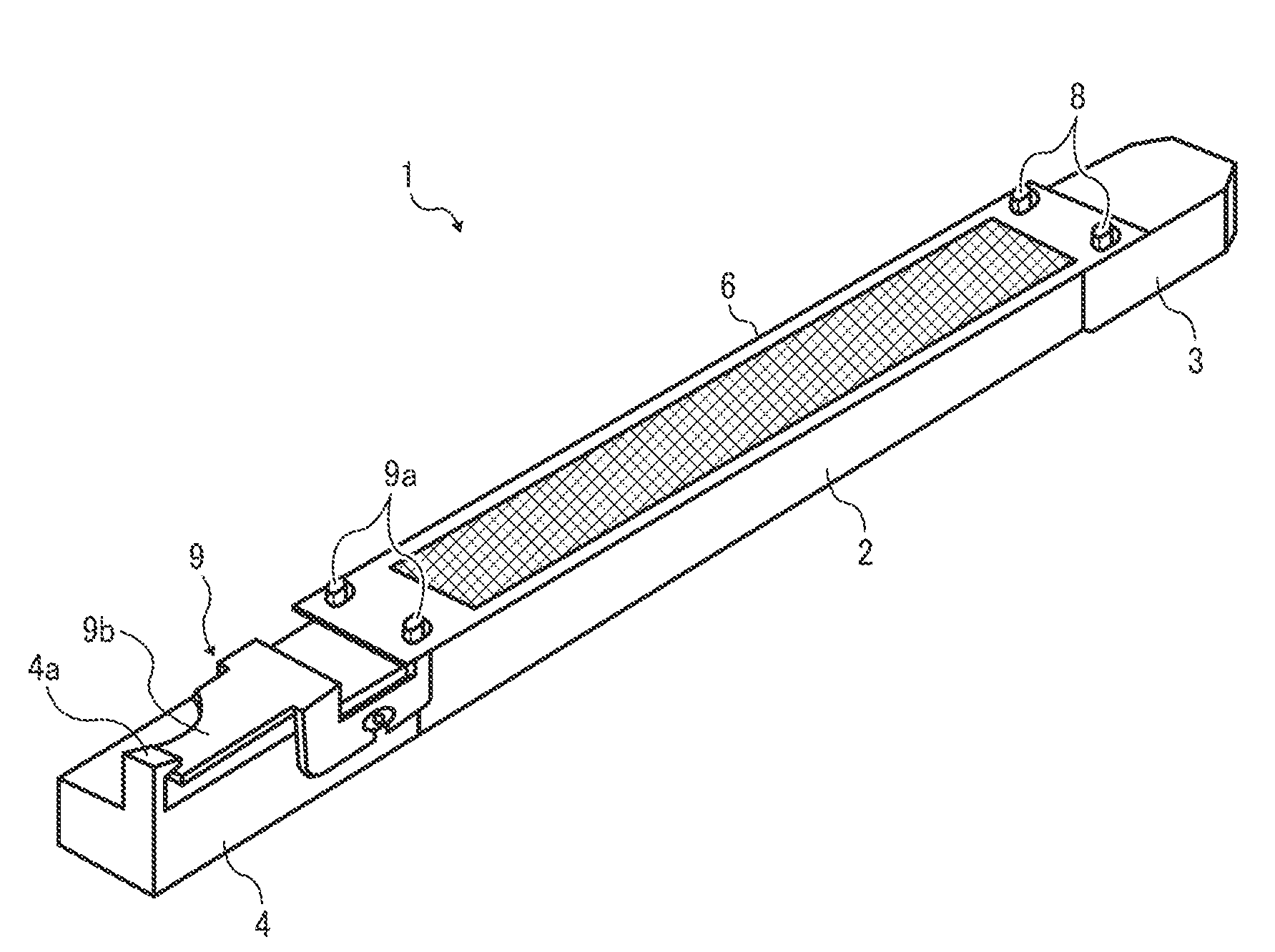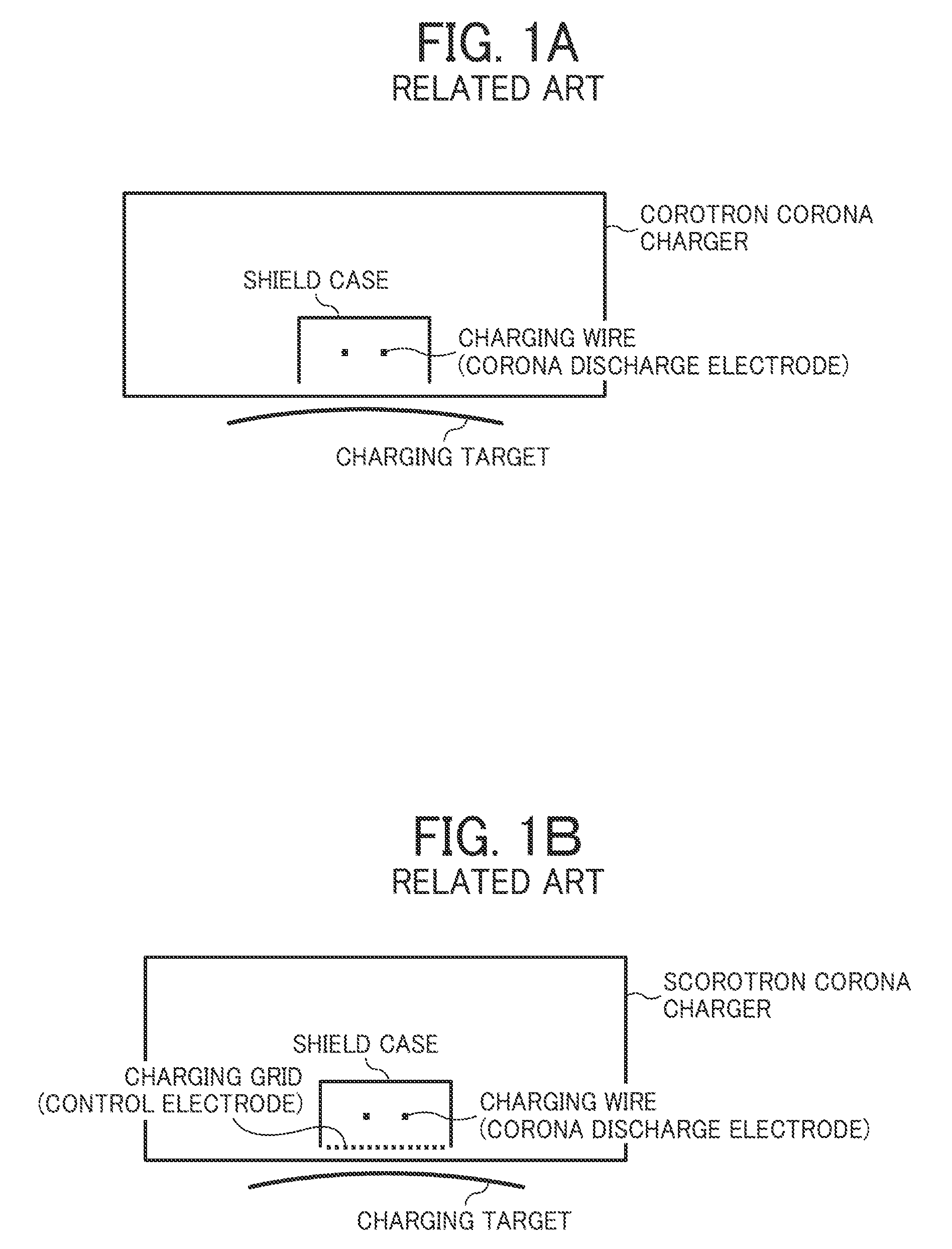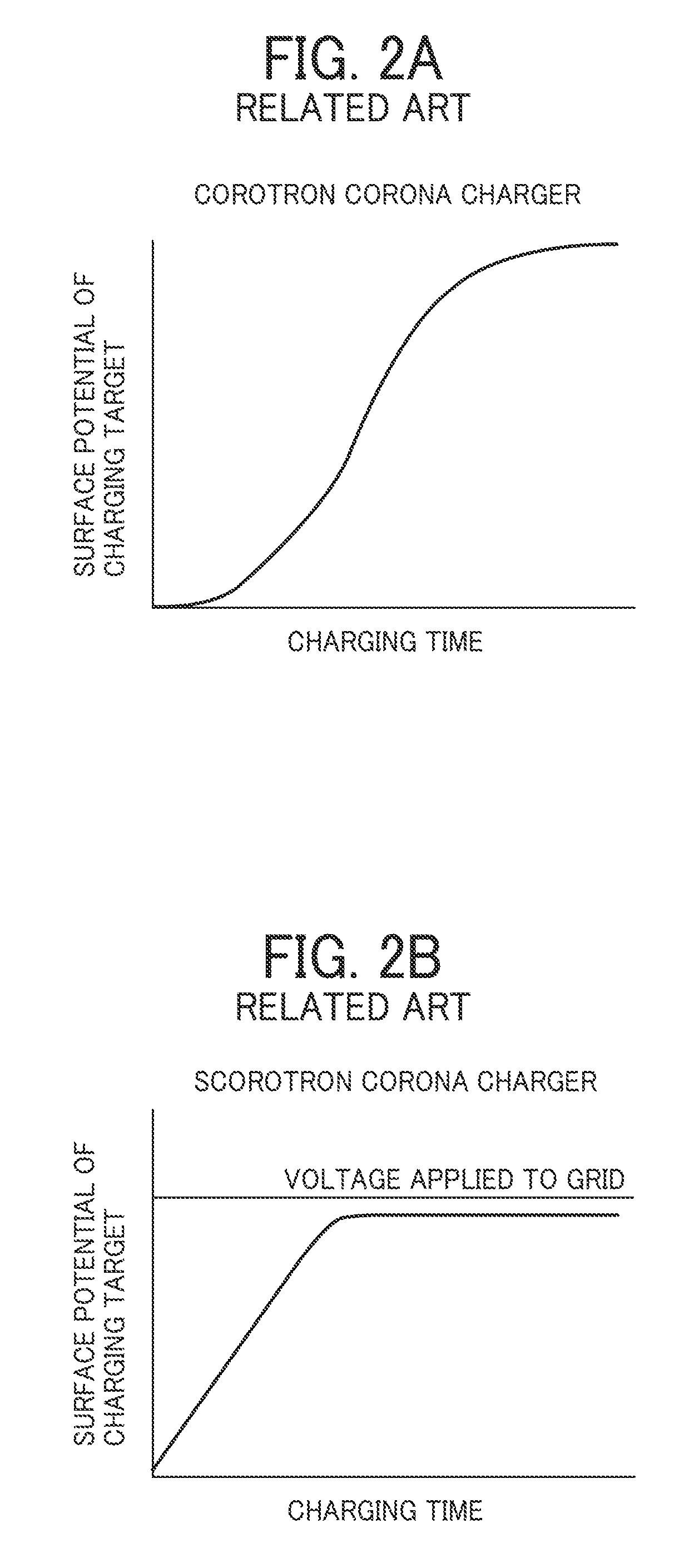Corona charger, and process cartridge and image forming apparatus using same
a technology of charger and process cartridge, which is applied in the direction of electrographic process apparatus, corona discharge, instruments, etc., can solve the problems of increasing environmental load, local dielectric breakdown of air, and continuous discharge of electricity, so as to avoid contamination
- Summary
- Abstract
- Description
- Claims
- Application Information
AI Technical Summary
Benefits of technology
Problems solved by technology
Method used
Image
Examples
example 1
[0134]A coating liquid in which 5 parts of a zeolite, 3 parts of a conductive agent, and 2 parts of a binder resin were dissolved or dispersed in a solvent was prepared. The coating liquid includes 30% by weight of solid components.
[0135]As the zeolite, a β-form zeolite containing hydrogen ion (980 HOA from Tosoh Corporation) was used. As the conductive agent, a zinc antimonate (CELNAX CX-Z210IP from Nissan Chemical Industries, Ltd.) was used. As the binder resin, a mixture of 3 parts of an alkyd resin (BECKOSOL 1307-60-EL from DIC Corporation) and 2 parts of a melamine resin (SUPER BECKAMINE G-821-60 from DIC Corporation) was used. As the solvent, 2-butanone was used.
[0136]The coating liquid was spray-coated on a charging grid of a corona charger. The resultant corona charger was subjected to the following evaluations (1) to (3) using the above-prepared photoreceptor (2) that has an outermost protective layer.
(1) Evaluation of Adhesiveness of Layer
[0137]In order to evaluate the adh...
example 2
[0151]The procedure in Example 1 was repeated except that an activated carbon (RP-20 from Kuraray Chemical Co., Ltd.) was used as the conductive agent.
example 3
[0152]The procedure in Example 1 was repeated except that a tin oxide (S2000 from Mitsubishi Materials Corporation) was used as the conductive agent.
PUM
 Login to View More
Login to View More Abstract
Description
Claims
Application Information
 Login to View More
Login to View More - R&D
- Intellectual Property
- Life Sciences
- Materials
- Tech Scout
- Unparalleled Data Quality
- Higher Quality Content
- 60% Fewer Hallucinations
Browse by: Latest US Patents, China's latest patents, Technical Efficacy Thesaurus, Application Domain, Technology Topic, Popular Technical Reports.
© 2025 PatSnap. All rights reserved.Legal|Privacy policy|Modern Slavery Act Transparency Statement|Sitemap|About US| Contact US: help@patsnap.com



